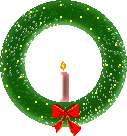Here are three of my family's favorite Christmas books. Every single one of them is a classic and beautifully illustrated too! These titles have withstood the test of time; they were read over and over until both of my girls had every page and picture memorized.
These are not listed in any specific order, my girls would never make the mistake of favoring one over the other. Indeed, they would have had us read all three every December night if they could have persuaded their father or myself to do so.
 |
| "Mr Willouby's Christmas Tree" |
1. "Mr Willouby's Christmas Tree" by Robert Barry, 1963, McGraw-Hill Book Company. As you can plainly see, our copy is worn and has faded over the years. This book was ardently loved by six children from two separate families and it was also my favorite Christmas story as a child. I rescued it from one of my Mother's garage sales years ago.
One day she emptied our childhood closets and sold our books for 25 cents a piece! I grabbed as many of the books as I could carry while her back was turned and hid them under my bed upstairs.
Many years later, I read this book often to my own children during the fall and winter months of their childhood. It was a popular story book among those with small hands. The lower half of the book is literally worn with handling and the binding on the old favorite is bent and broken. The condition of a book, as everybody knows, is ultimately the sign of true love among children.
 |
| "The Steadfast Tin Soldier" |
2. "The Steadfast Tin Soldier" by Hans Christian Andersen, 1991, Michael Di Capua Books. This is a very old Christmas tale and has been published by dozens of companies over the years but the very finest version of it is illustrated by Fred Marcellino. It has also been retold by Seidler so that it's length and poignancy is age appropriate for children under ten years old. Although Hans Christian Andersen's tales are moralistic, his messages can be lost on modern day children. This Christmas tale, however, has been rewritten and illustrated in such a way as to convey it's original depth and brevity and I wouldn't bother with the purchase of any alternative myself.
 |
| "One Wintry Night" |
3. "One Wintry Night" by Ruth Bell Graham. The book is published by Baker Books and lavishly illustrated by Richard Jesse Watson. It is the retelling of Jesus' birth within the prophetic context illustrated in scripture. Their are eleven chapters in the book and I recommend that it be read aloud over eleven days. The book is very thorough and age appropriate for children younger than twelve. It is not written in a condescending manner or illustrated as a trendy juvenile picture book. There was great thought given to it's production and it should be considered an American Christmas Classic. The illustrations are magnificent and the story-telling style of Ruth Bell Graham is straight forward and easy to understand. After reading this story aloud, your children will, without a doubt, understand the true meaning given to Christmas by all of Christendom.
Now that my children have grown, their books have been divided between them, but the Christmas selection has still remained in tact at my home until it can be duplicated. They did not have the heart to divide the collection up, to choose one book over the other. So it is up to me to find the spare cash to acquire more copies of each selection for future grandchildren.







































